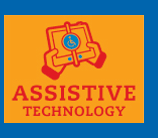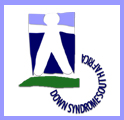Much misunderstanding, even among professionals, occurs because of an unclear use of terminology regarding developmental delays, learning disabilities, and neurological spectrum disorders. Many people use these terms interchangeably. Though overlap often appears among the three, distinct differences also exist. Parents, counselors, teachers, school administrators, medical professionals, and especially today’s children will reap great benefits from investigating a clearer understanding of learning needs.
Developmental Delays
The most basic way to define developmental delay is simply a child who “is not reaching developmental landmarks at the usual age” (Mathews, 1998). This may include delay in developing socially, cognitively, emotionally, linguistically, and sensorial (Linwood, 2005). Neurological Spectrum Disorders can cause developmental delays, but they are not the only cause; and developmental delays can manifest as learning disabilities, as can some neurological spectrum disorders. A delay, however, is not a permanent, life long problem as are disabilities and disorders (Horowitz, 2005). A parent, with a child who has not reached a particular milestone at the expected time, should contact the child’s paediatrician for the child to receive comprehensive screening. The paediatrician can rule out other factors that may cause the delay, such as: hearing loss, vision impairment, chromosomal disorders, infections, hypothyroidism, Rett syndrome, neuromuscular disorders, and a long list of other possibilities. A referral to a pediatric neurologist also may be recommended to rule out neurological disorders.
Paediatric Neurologist Dr. Kathy Matthews recommends tests based on information gathered “from parents and the findings on physical examination” (1998). Many times the neurologist will need to see the child on multiple visits in order to “identify a specific disease, condition or syndrome” (Mathews, 1998). Children who have a mild delay will likely catch up in early childhood, whereas children with a severe delay may continue to experience difficulty as adults (Mathews, 1998). Parents should provide a “loving and stimulating environment” as well as consider contacting one or more of the following specialists: physical therapist, occupational therapist, or speech therapist - depending on the type of delay (Mathews, 1998). Dr. Mathews explains that “the goal of treatment is to maximize abilities while preventing new problems as much as possible” (1998).
Sometimes, children with developmental delays receive the label of mental retardation; however, mental retardation is not a delay, but a permanent condition (Linwood, 2005). Likewise, children with mental retardation do not fall under the federal definition of learning disabilities (Burmaster, 2008).
Learning Disabilities
In simple terms, learning disabilities affect seven basic areas of learning: listening, thinking, speaking, reading, writing, spelling, and performing mathematical calculations (Horowitz, 2005). Unlike developmental delays, learning disabilities are life long (Horowitz, 2005). According to the federal definition, this includes “perceptual disabilities, brain injury, minimal brain dysfunction, dyslexia, and developmental aphasia,” however, it does not include learning problems primarily resulting from “visual, hearing, or motor disabilities, mental retardation, emotional disturbance, or environmental, cultural, or economic disadvantage” (Burmaster, 2008).
Listening and Thinking
A learning disability in listening comprehension often includes receptive language difficulties as well as auditory processing. Auditory processing problems include “sensation, perception (discrimination, sequencing, analysis and synthesis) association and auditory attention” (2000). An imperfect ability to think may be caused by a number of disorders including CAPD, Autism, and Asperger’s Syndrome.
Speaking
According to Sharyn Neuwirth (1993) “speech and language problems are often the earliest indicators of a learning disability.” People with this learning disability find it challenging to produce speech sounds, to understand others, and to communicate orally (Neuwirth, 1993). Speech therapy aids the child with a speech disability in overcoming difficulties with articulation, rate of speech, and vocal expression (Neuwirth, 1993). Some children are diagnosed by speech pathologists to have Developmental Apraxia of Speech (DAS). This disorder “interferes with a child’s ability to correctly pronounce sounds, syllables and words” (Guild, 2009).
Reading, Spelling, and Writing
Learning disabilities in reading, reading comprehension, spelling, and writing often stem from a disability known as dyslexia. According to Ronald D. Davis author of The Gift of Dyslexia, many people used to use the term dyslexia to describe many learning disabilities; therefore, dyslexia was known as “The Mother of Learning Disabilities” (1997, p. 7). In her research for the book Overcoming Dyslexia, neuroscientist Sally Shaywitz found dyslexia to be a chronic condition rather than a “temporary lag in reading development” (2005, p. 33). A learning disability specifically in the area of writing is often referred to as dysgraphia. Neurological disorders and sensory processing disorders can also cause learning disabilities in the areas of reading, spelling, and writing.
Math
A learning disability in performing mathematical calculations and reasoning is most often labeled dyscalculia. Just because a student has difficulties in math does not mean that she has a learning disability. The National Center for Learning Disabilities (2009) states that a teacher or trained professional must evaluate a student “about a full range of math-related skills and behaviours.” OECD post-doctoral fellow Anna Wilson combined educational and psychiatric definitions of dyscalculia to develop the following criteria:
1) the presence of difficulties in mathematics, 2) some degree of specificity to these (i.e. the lack of across-the-board academic difficulties) and 3) the assumption that these are caused in some way by brain dysfunction (Wilson, 2009).
Ms. Wilson also mentions that the research for the possible causes of dyscalculia is still in its “infancy” (Wilson, 2009). So, whether or not the brain impairment causing dyscalculia is due to a neurological disorder, a genetic disorder, or some other problem is not clearly known at this time.
Neurological Spectrum Disorders
A look at the National Institute for Neurological Disorders’ (2009) index of disorders shows more than two hundred different disorders! Dr. Glen Havens (2008), in his video lecture on ADHD, demonstrated the spectrum of neurological disorders with a circle diagram of interlocking rings. On his diagram he presented the following eight disorders: ADD/HD, OCD (obsessive compulsive disorder), Bipolar, Tourettes, Autism, Asperger’s Syndrome, Anxiety, and Depression (Havens, 2008). According to Mark Crawford (2008) Obsessive Compulsive Disorder and General Anxiety Disorder are two of seven anxiety related disorders grouped under Paediatric Anxiety Disorder. In the book Autism Spectrum Disorders, author Chantal Sicile-Kira (2004, p. 26) explains that Autism, Asperger’s Syndrome, and Pervasive developmental disorder not otherwise specified (PDD-NOS) fall under the category of PDD (Pervasive Developmental Disorders) in the DSM-IV. In the preface of her book, she explains that she groups autism, PDD, and Asperger’s under the umbrella of “autism spectrum disorders” (Sicile-Kira, 2004, p. x). There seems to be a discrepancy among neurologists, psychiatrists, psychologists, and authors in how to group these; yet, specialists generally group these disorders together under one name or another. These two consolidations group Dr. Havens’ list into six areas, four of which appear to occur more frequently—ADD/HD, Pervasive Developmental Disorders, Pediatric Anxiety Disorders, and Depression. Of these neurological spectrum disorders, ADD/HD and PDD-NOS are recognized by many states as learning disabilities: the others may cause learning disabilities but are not typically recognized in and of themselves as learning disabilities.
ADD/HD
ADD/HD, better termed Attention Regulation Disorder, has three primary symptoms: distractibility, impulsivity, and (in the case of ADHD) hyperactivity (Havens, 2008, DVD 10). According to Dr. Havens, ADD/HD in children occurs six times more frequently in boys (2008, DVD 10). A proper medical diagnosis is critical, as more than ten conditions exist that may accompany, mask, or resemble ADD/HD (Havens, 2008, DVD 10). The Federal Disabilities Act recognizes ADD/HD as a legal disability and parents whose kids have been diagnosed with this disability need to understand it and advocate for their children (Havens, 2008, DVD 10). Though this is a life long disorder, Dr. Havens explains that adults (having a fully developed frontal lobe) often learn to compensate for the symptoms, allowing them to greatly reduce (or eliminate) medication (2008, DVD 10).
Pervasive Developmental Disorders (PDD)
Autism, Asperger’s Syndrome, Rett’s disorder, Childhood disintegrative disorder, and PDD-NOS are pervasive developmental disorders according to the DSM-IV (Sicile-Kira, 2004, p. 26). According to Ms. Sicile-Kira, medical tests to diagnose autism do not exist; therefore, “professionals depend on observing the behaviours of the person in question as well as the medical and developmental history (2004, p. 25). On the other hand, she says that professionals recommend a series of medical tests be performed to eliminate other possible causes for a person’s behaviour or symptoms. These tests, she says, include: hearing tests, genetic testing, electroencephalogram, metabolic screening, magnetic resonance imaging, and computer-assisted axial tomography (Sicile-Kira, 2004, pp. 24-25).
Paediatric Anxiety Disorder
One out of five children will experience an anxiety disorder at some time in his or her life (Crawford, 2008, DVD 5). That means a parent with five children is likely to have a child who faces this disorder; and a teacher with 30 students could have six or more students facing pediatric anxiety disorder. Dr. Crawford, in his video lecture “Anxiety in Children and Teens,” lists seven anxiety disorders (2008). General Anxiety Disorder is marked by excessive worrying, various physical symptoms, and a self-critical nature. Social Anxiety is a fear of social situations. Panic Disorder, “an acute sudden fear reaction,” can sometimes manifest as a temper tantrum. Children, usually between ages seven and nine, who exhibit an “unrealistic, excessive fear” of parental abandonment may have separation anxiety disorder. One in forty people worldwide have obsessive compulsive disorder. Forty percent of children have experienced or been exposed to an event that would cause Posttraumatic Stress Disorder. The seventh and final anxiety disorder listed by Dr. Crawford is specific phobias (2008, DVD 5). Doctors and professionals treat anxiety disorders through medication or cognitive behavior therapy (Crawford, 2008, DVD 5). Parents and teachers can help children overcome mild anxiety by coaching them to list items they can control and items that are out of their control (Crawford, 2008). A child can make a plan for the things within his or her control (Crawford, 2008). Use of imagery is also helpful in helping children overcome fears (Crawford, 2008).
Dr. Catherine Hart Weber, in her video lecture “Stressed or Depressed,” lists several ways parents can know if their kids are stressed (2008, DVD 9). She says that kids will show signs of fatigue; they will be irritable and jumpy; they will have frequent illnesses and sleep problems; and they may self-medicate (with drugs, alcohol, over-the-counter meds, overeating, or cutting) (Weber, 2008, DVD9). Parents can help children and adolescents de-stress by decreasing pressures, reducing expectations, planning down time, providing encouragement and consistency, taking the child for a physical exam to rule out physiological causes, getting to the bottom of the cause, and providing ideas to help them recover from depression (e.g., relaxation and exercise) (Weber, 2008, DVD 9). If parents suspect depression, they should seek medical help and counseling, as the sooner help is sought, the less severe the depression will be (Weber, 2008, DVD 9).
Though developmental delays, learning disabilities, and neurological spectrum disorders frequently overlap—parents, teachers, counselors and medical professionals should develop a clear understanding of each and exercise care when using these terms. Children receive the greatest benefits when correctly diagnosed and treated. Terminology (i.e., labels), when correctly used, allows people to have a greater understanding of possible symptoms and the need for certain treatments; however, parents and professionals must seek to treat the symptoms (and in some cases the causes of the symptoms) and not seek to treat the label.






























